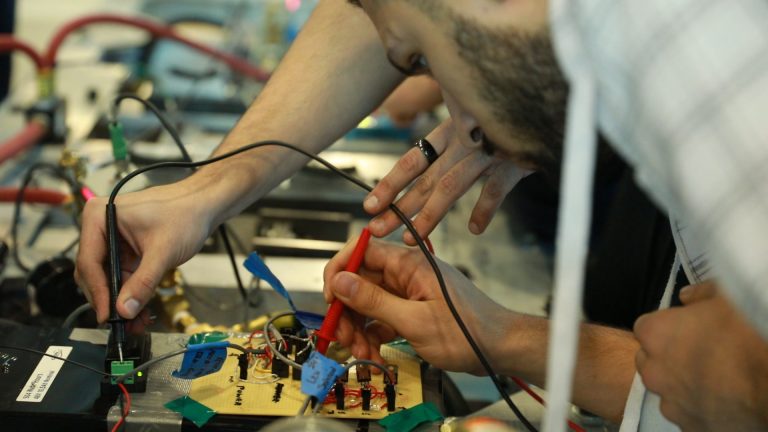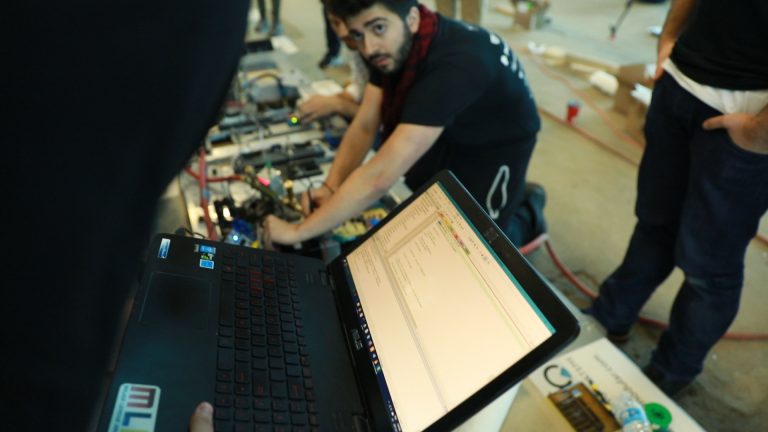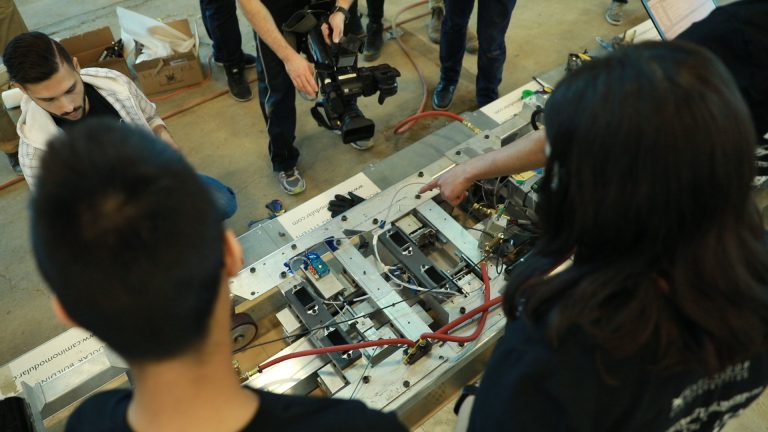One day, if the technology contained in his truck proves out, the nearly 4,000-kilometre trip that Yazan Obeidi will make this week from Kitchener’s Lot 41 to Elon Musk’s SpaceX campus in Hawthorne, Calif., will take two or three hours instead of three or four days.
But that’s getting ahead of things.

For now, the point is that Obeidi and his University of Waterloo team are making final preparations to move their cutting-edge pod known as Goose 1 to California for the start of a weekend competition Jan. 27-29, against some 30 teams from around the world.
They intend to pit their vehicle — the only one from Canada — in a series of tests administered by SpaceX in a 1.6-kilometre hyperloop test facility at the company’s Hawthorne headquarters. Their intention is to help change the face of transportation.
“Yes, fair to say we’re all pretty excited,” Obeidi says. “We’ve accomplished so much.”
Hyperloop is a transportation concept unveiled by serial entrepreneur Musk in 2013. Picture a giant vacuum tube designed to whisk small, floating pods of people or goods from city to city at speeds well beyond that of a conventional modern-day airliner. A trip from Toronto to Montreal would take about 30 minutes.

The competition was launched by SpaceX to encourage development of the hyperloop concept.
The University of Waterloo team have been working toward this day for nearly two years. Their project, known as Waterloop, is backed by a $43,000 Kickstarter campaign and involves 150 students from a range of disciplines.
Last weekend the Waterloop team conducted a live demo of their half-scale Goose 1 pod at Lot 41, an innovation campus on Ardelt Place in Kitchener. Tuesday, Obeidi and teammate Stefan Sing will begin the long drive to California. Once there, they’ll meet up with another five or six team members and begin to set up for the event.
“We have levitation. We have braking systems that work. We have the low-speed drive train system. Everything is in place,” said Obeidi, a third-year systems design engineering student at UW.
At SpaceX, the team will take part in a variety of tests, and Obeidi is particularly interested to see how their pod will perform in the six-foot diameter, vacuum tube of the test facility. The vacuum is key to Musk’s hyperloop concept: a frictionless environment is in part what will permit a vehicle to travel at such high speeds.

Obeidi admits he has some concerns. His team hasn’t been able to conduct as much testing in Waterloo Region as it would have liked and will have to evaluate at the test site whether it can safely take part in the full range of tests.
But he and his team know that many other teams are facing the same obstacles.
“We’re going to err on the side of caution,” said Obeidi. “We want to make sure we can do this safely. Whether we can do that at 150 metres per second, well, we’ll have to see.
“Regardless, we’ve learned a ton. We’ve already reached a lot of our goals.”
Commercial firms are already exploring hyperloop concepts. One, dubbed Hyperloop One, has raised $160 million and demonstrated its technology in May, 2016. It’s possible that the technology on display at the SpaceX competition will one day be incorporated into a commercial design.
The outcome of this weekend’s test will have no bearing on the University of Waterloo team’s intention to take part in the competition’s second phase, which will happen this summer, using the team’s larger pod which they’ve dubbed Goose 2. That competition will be a pure speed test and Obeidi said he expects engineering teams from Western University and Queen’s University will also take part and he’s already looking forward working on that project.
“We’ll have twice the time [to get ready for the summer event], and all these lessons learned. We have a lot of momentum, and money in the bank. Everything is now set to do this as we envisioned.”
No doubt food for thought during Waterloop’s long drive to California.

